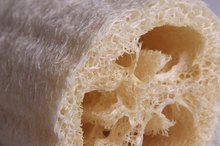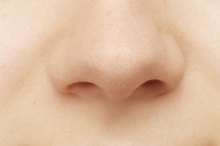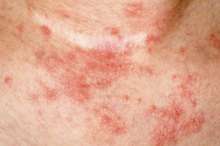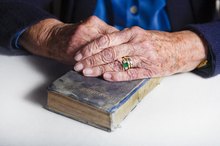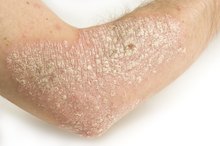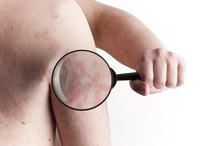How to Get Rid of White Spots on the Scalp
Psoriasis commonly appears on the knees and elbows, but can also affect the scalp. Scaly white spots, which are actually layers of dead skin with a powdery sheen, are characteristic of the scalp psoriasis condition. In some cases, the white spots can spread to the back of the neck, along the hairline and forehead and behind the ears. According to the National Psoriasis Foundation, topical treatments are often the first line of defense when it comes to getting rid of white spots on the scalp 1.
Wash your scalp with a shampoo that contains tar or salicylic acid. A tar or salicylic shampoo will help soften the patches of dead skin in mild cases of psoriasis. Massage a quarter-sized amount of shampoo into your scalp for five minutes. Rinse the shampoo and scales away with water.
How to Prevent Dandruff in Winter
Learn More
Apply a topical cream to the white spots. Over-the-counter topical creams that contain anthralin or dovonex contain ingredients that soften the white patches prior to shampooing. Massage a pea-sized amount of topical cream into the affected area using your fingertips. Wait 30 minutes and shampoo the topical cream and the dry skin away.
Ask your physician about prescription medications that may help if your scalp psoriasis is not improving. She may order you to take an oral prescription medication such as cyclosporine, methotrexate or an oral retinoid, to help prevent the multiplication of dead skin cells and treat your condition.
Tips
For some people, light therapy works to counteract psoriasis. This treatment is most effective in those who have thin hair or a bald or shaved head. Some physicians prescribe ultraviolet combs or units that project the UV light onto the scalp.
Warnings
Refrain from picking and scratching at the white spots on your scalp. Doing so can cause bleeding and skin damage. If you must relieve an itch on your scalp, use the balls of your fingertips instead of your fingernails.
Related Articles
References
- National Psoriasis Foundation: Treating Psoriasis
- American Academy of Dermatology: Frequently Asked Questions About Psoriasis
- Blakely, K. and Gooderham, M. Management of scalp psoriasis: current perspectives. Psoriasis (Auckl). 2016;6:33-40. doi:10.2147/PTT.S85330
- Aldredge, L., Hingham, R. Manifestations and Management of Difficult-to-Treat Psoriasis. J Dermatol Nurse Assn. 2018 Jul/Aug;10(4):189-97. doi:10.1097/JDN.000000000000418
- National Psoriasis Foundation. Causes and Triggers. Updated October 23, 2018
Writer Bio
Jonae Fredericks started writing in 2007. She also has a background as a licensed cosmetologist and certified skin-care specialist. Jonae Fredericks is a certified paraeducator, presently working in the public education system.

